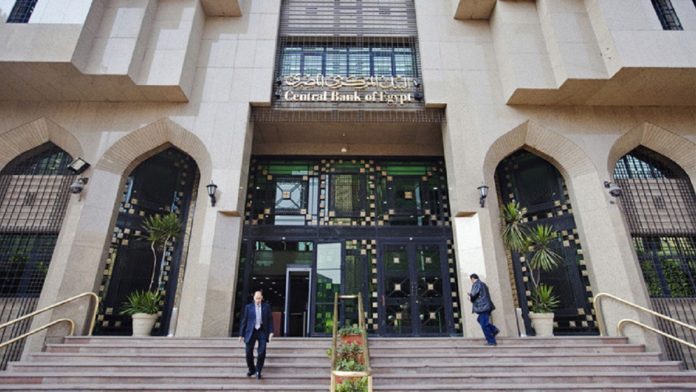Over the past weeks, investors regarded the Central Bank’s move towards lowering the interest rate by 1% from 17.75% to 16.75% as positive economic news, especially as the Central Bank is further discussing arrangements to lower the interest rate further more along this year. In this article we explain the implications of this factor and its recent history and economic significance to both individuals and investors.
- Who makes the decision to lower, fix or raise interest? & What is the MPC?
Interest rate reduction is a decision that falls within a committee that includes central bank leaders, including the governor of the Central Bank and his deputies along with a representative from the Ministry of Finance and a number of experts, consultants and advisers. This committee is present in any country and is usually referred to as the Monetary Policy Committee (MPC).
The Egyptian MPC has been formed by a decision by the Board of Directors of the Central Bank of Egypt, to be formulated of seven members, namely the Governor of the Central Bank of Egypt, Deputy Governors, and four Board members including a member from the Ministry of Finance to maintain constant coordination between the central bank and the Ministry on monetary policy decisions made by the committee.
The Committee holds its meetings on Thursdays every 6 weeks (8 times a year) and the schedule of the meetings until the end of this year is announced on the website of the Central Bank of Egypt. The mission of the committee is to set policies to achieve price stability, combat inflation, stimulate growth and reduce unemployment, accordingly, the Central Bank of Egypt is committed – in the medium term – to achieving lower rates of inflation to stimulate investment and economic growth.
The MPC reviews reports, economic and financial studies, analysis and indicators prepared by the monetary policy unit of the Central Bank of Egypt, that include recent local developments that tackle current statistics regarding inflation, interest rate, monetary and credit developments, as well as other financial indicators, along with risks associated with inflation and other estimates and factors, While on the other hand, the MPC also reviews global trends and indicators in terms of inflation rates, growth, interest rates and future forecasts, before deciding on interest rate amendments.
- What is the meaning of reducing interest on deposits and loans?
A reduction in interest on loans means a reduction in the amount of expenses to be paid over the principal amount of the loan by an investor. On the other hand, the reduction in the interest rate on the deposit means a reduction in the amount of profits to be paid over the principal amount of the deposit to the individual.
Accordingly it will be more appealing to invest money in business rather than savings and with the decreased cost of establishing new projects and companies. People and companies are therefore motivated to borrow more to establish new enterprises, employing workers, or expanding their existing businesses that will lead to increased production, local market coverage and accordingly less imports, exports increase, unemployment decreases and economy grows, and that is mainly why economists see this development as a positive indicator for economic growth.
- The History of interest rates in Egypt over the last 30 years?
The world is broken into two types of economies either advanced or emerging economies. Advanced economies are countries that have developed capital markets with high levels of liquidity, large market capitalisation, high levels of per capita income and is characterised by lower interest rates. On the other hand, Emerging economies are countries in the process of rapid growth and development with lower per capita incomes and less mature capital markets than developed countries, as well as, characterised by higher interest rates. Egypt in an emerging economy, that has a relatively high interest rate compared to advanced economies.
Egypt went through 4 stages of interest rate amendments and currently we are entering a fifth stage of dynamic changes based on economic performance. The stage of the nineties crisis brought along with the Gulf War had some economic reforms, yet regrettably were incomplete, the stage of stability in the millennium with the governments of Atef Ebeid and Ahmed Nazif, the stage of the outbreak of the revolution that witnessed increased subsidies and spending that lead to depletion of reserves and was accompanied by a neglect for an economic reform for fear of public distress and chaos, and the stage of a real economic reform plan that started to formulate in mid-2014 and was launched in November 2016.
- Over the first stage the interest rate was between 12% – 20%
- Over the second phase the interest rate fell between 8% – 12%
- Over the third phase, the interest rate was fixed between 8% and 12%
- Over the fourth stage, interest increased between 11% and 20%
The previous 4 stages are over, we are now living in the fifth phase of amendments that still has not been completed, the stage at which success of economic reforms is the main engine in developing economic performance, and hence mirrored through the series of interest rates reductions from 20% to 16.75%.
- Interest rates around the World?
Other countries have taken the same path in their economic reform. Turkey raised interest rates to about 250% at the beginning of its 1995 economic reform (as mentioned in my previous article). Currently Turkey’s interest rate is 8%. On the other hand, Brazil raised its interest rate to 45% at the beginning of its 1999 economic reforms, while currently its interest rate is 6.5%.
Note that interest rate is linked directly to the rate of inflation; inflation level is the reaction to the interest rate level.
For example in countries where there is a lower inflation rate, you will note much lower interest rates like most of the G20 countries;
Euro = 0%
England = 0.5%
United States = 1.75%
Russia = 7.25%
China = 4.35%
India = 6%
Japan = -0.1%
Mexico = 7.5%
- In Africa, the highest interest rates are in:
Congo, Angola, Ghana and Mozambique = 18% to 20%
- In South America, the highest interest rates are in:
Argentina = 27.25%
- In Asia, the highest interest rates are in:
Iran = 18%
- In Europe, the highest interest rates are in:
Ukraine = 17%
- Top five for highest interest rates in the world
Argentina, Venezuela, Haiti, the Congo and Angola
Egypt is ranked 11th in the world at the highest interest rates list, but the successive reduction of its interest rate since last January, have improved its ranking, while before the current reductions we were in sixth and seventh place.place.
5– When the interest rate was raised along with the Egyptian pound’s floatation and throughout 2017, economists said it was a good decision too, what caused this contradiction ?
It is not a contradiction, it is flexibility is not a contradiction, it is flexibility and adaptation to the economic variables expected through the primary stage of economic reform, along with the current economic situation when launching the reform plan.
Inflation was peeking and to reduce it, spending needed to be reduced, accordingly, with the incentive of a higher interest rate on Savings, people started to save their money in banks for a higher profit on deposits, while transferring their US dollar savings into Egyptian pounds to gain from the interest rate yields, thus yielding US dollars and killing the black market by the new floatation rate, while managing the difference treasury bills issued in US dollars for foreign investments to cover our pilled up financial commitments that were large at the time. Yet, with the current commitments lower, reserves increasing and inflation falling from 35% to 14%, thus there is no need for a high interest rate, on the contrary, we need to reduce the interest rate to stimulate growth and investment.
6– In Conclusion
According to the views of a large number of international institutions and investment banks, it is expected that by end of 2018, interest rate may reach 13% to 15%, taking into account, the mid-year, subsidy adjustment within fuel and electricity.
The biggest sector benefiting from the interest rate cuts is the real estate sector because it is a safe, stable, secure and non-risk investment and comes second after investing in banks. The sector is characterised by its stability over the instabilities of 2011 to date with no fluctuations, on the other hand, Egypt’s growing population and over 90% of unused land serves as a fertile opportunity for its sustainable growth.
The real estate sector affects multiple sectors in the economy and is the most important sector that leads growth within the Egyptian economy and even most of the world’s economies, as it is linked to large labour-intensive sectors. The growth of this sector impacts growth in about 90 secondary sectors linked to the construction industry.
Thanks to the massive national projects under-way and growing infrastructure, there is a wave of new cities along with the new capital (the number of these new cities is more than 15 cities.) that are currently in progress.
On the other hand, it is worth noting that date for the principal money invested by individuals in high-yield deposits at 20%, as well as the Suez Canal deposits are close to maturity and accordingly people will look for alternative safe investments and property will be the ideal alternative.
The Central Bank and the government in their move are looking further more towards developing MSMEs and offering over 20 public companies in the stock market from variable sectors, such diversification is recommended for an economy to develop its growth.












